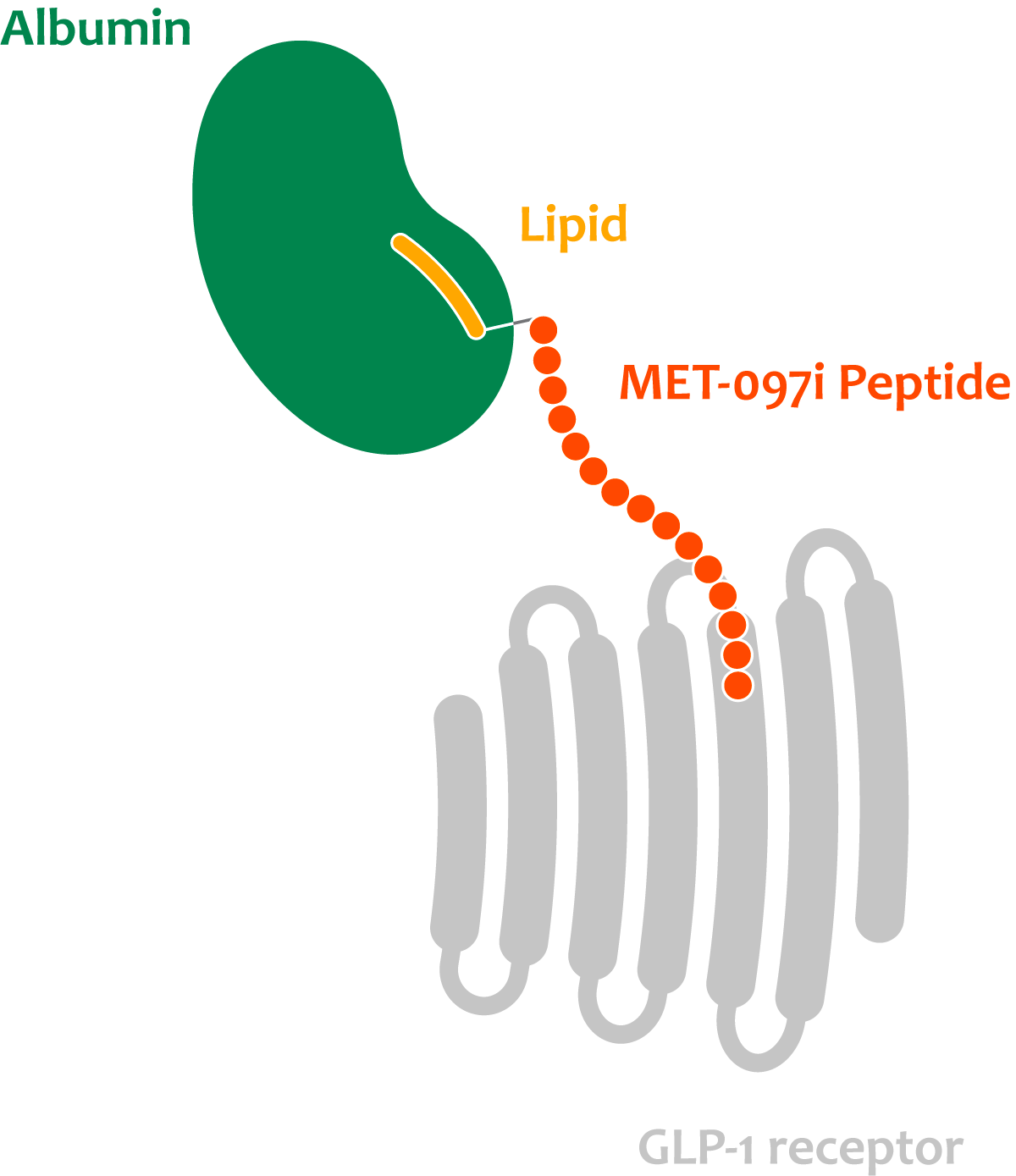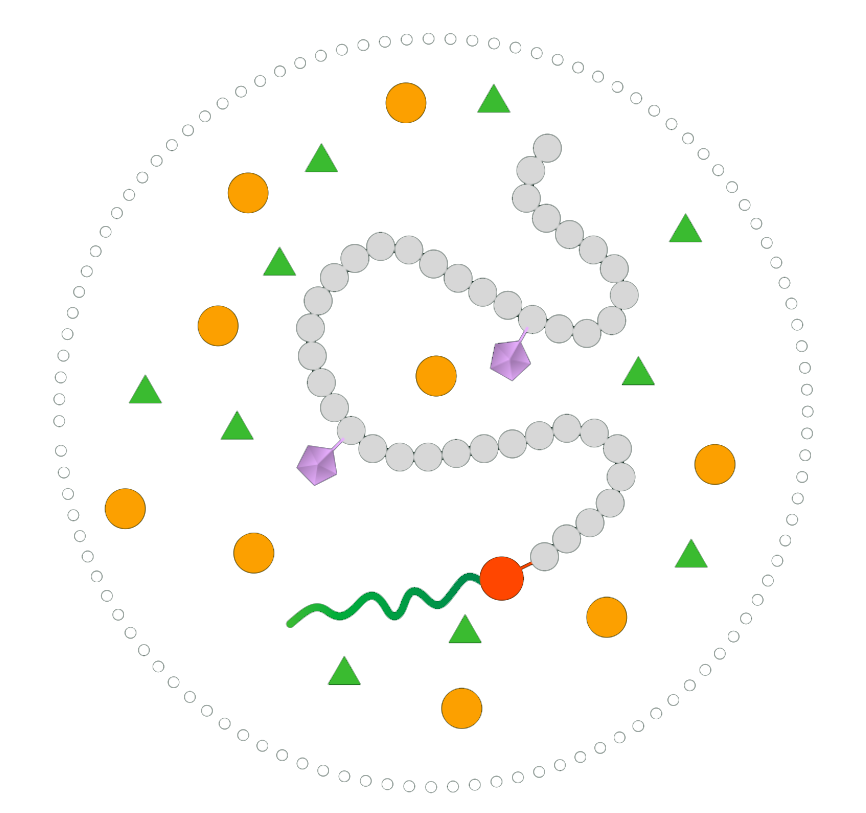SCIENCE
Building on two decades of foundational research in obesity and peptide engineering to develop scalable therapeutic candidates that reduce barriers to adoption and long-term use
Our library of product candidates and our peptide engineering platform were initially derived from approximately 20,000 nutrient stimulated hormone (NuSH) analog peptides synthesized and tested over twenty years by Professor Sir Steven Bloom and his team at Imperial College, London, and have been enhanced as we systematically developed a range of techniques to optimize potency, durability, solubility, and combinability.
With these techniques, we are aiming to create an adaptable portfolio of medicines that not only addresses the limitations of current therapies but also anticipates the challenges with next-generation treatments, with features like less frequent and more flexible dosing, improved manufacturability, enhanced effectiveness, and improved tolerability.
Nutrient Stimulated Hormone (NuSH) Analog Peptides
Nutrient stimulated hormone, or NuSH, refers to a family of hormone pathways known to act along the gut-brain axis to modulate appetite, insulin production, and other metabolic parameters. Peptides targeting NuSH pathways, including GLP-1 and GIP, have been shown to be safe and effective in treating obesity, overweight, and related conditions1.
At Metsera, our preclinical and clinical studies suggest that by combining individual NuSH analog peptides at optimized ratios on top of a fully-biased GLP-1 receptor agonist backbone, we may be able to deliver improvements in tolerability and weight loss relative to current and next-generation products, while also improving outcomes in other metabolic parameters1. We seek to optimize our NuSH peptide therapeutic candidates for potency, combinability, and longer-lasting therapeutic use, making them a strong foundation for next-generation medicines.

MINT
Our Proprietary Peptide Library and Engineering ProcessOur proprietary MINT library is built upon approximately 20,000 NuSH analog peptides developed over the course of 20 years of systematic discovery and bioengineering work. This work pioneered methods to modify peptides, optimizing NuSH analog structures for therapeutic use.
During the optimization process, we focus on four molecular characteristics simultaneously: solubility, miscibility, in vivo half-life, and in vivo activity. By engineering these four characteristics, we aim to produce investigational medicines that are long-lasting, highly potent, and combinable for tailored treatments. These features are intended to allow for competitive efficacy at lower doses, which could improve scalability and access.

MINT
Our Proprietary Peptide Library and Engineering ProcessOur proprietary MINT library is built upon approximately 20,000 NuSH analog peptides developed over the course of 20 years of systematic discovery and bioengineering work. This work pioneered methods to modify peptides, optimizing NuSH analog structures for therapeutic use.
During the optimization process, we focus on four molecular characteristics simultaneously: solubility, miscibility, in vivo half-life, and in vivo activity. By engineering these four characteristics, we aim to produce investigational medicines that are long-lasting, highly potent, and combinable for tailored treatments. These features are intended to allow for competitive efficacy at lower doses, which could improve scalability and access.

HALOTM
Achieving Ultra-long Half-life for NuSH Analog Peptides
HALOTM
Achieving Ultra-long Half-life for NuSH Analog PeptidesOur HALO platform is a novel peptide lipidation technology that extends the half-life of NuSH analog peptides. First-in-human studies of MET-097i confirmed a half-life of approximately 16 days, we believe the longest of any known NuSH peptide in development and approximately 2-3-fold longer than current approved NuSH-based therapies. We have applied the HALO platform across all Metsera peptides in development, allowing for flexible combination treatment options with matched half-lives.
This ultra-long half-life potentially enables four key advantages:
- Titration-free dosing, enabling intermittent dosing without having to re-titrate
- Infrequent dosing, supporting lifelong therapy
- Improved tolerability due to reduced trough-to-peak pharmacokinetic variability
- Greater scalability due to lower active pharmaceutical ingredient (API) requirement

Peptide binds to GLP-1 receptor with or without dissociation from albumin

MOMENTUMTM
Oral Administration and Bioavailability
MOMENTUMTM
Oral Administration and BioavailabilityOur MOMENTUM platform combines multiple technologies to enhance oral absorption and bioavailability of NuSH analog peptides. Historically, high dosage requirements have made oral NuSH analog peptides difficult to scale, favoring the development of small-molecule alternatives for weight loss. However, early data for small-molecule NuSH analogs suggest reduced efficacy and more frequent side effects compared to peptides. Our MOMENTUM platform is designed to overcome these challenges, enabling effective oral administration of our NuSH analog peptides at doses potentially significantly lower than other oral NuSH peptides in development.

Enteric coating
Protects the peptide from degradation in the stomach
Biotins
Enable active transport
Permeation enhancers
Promote absorption
Stability enhancer
Enhance enzymatic stability